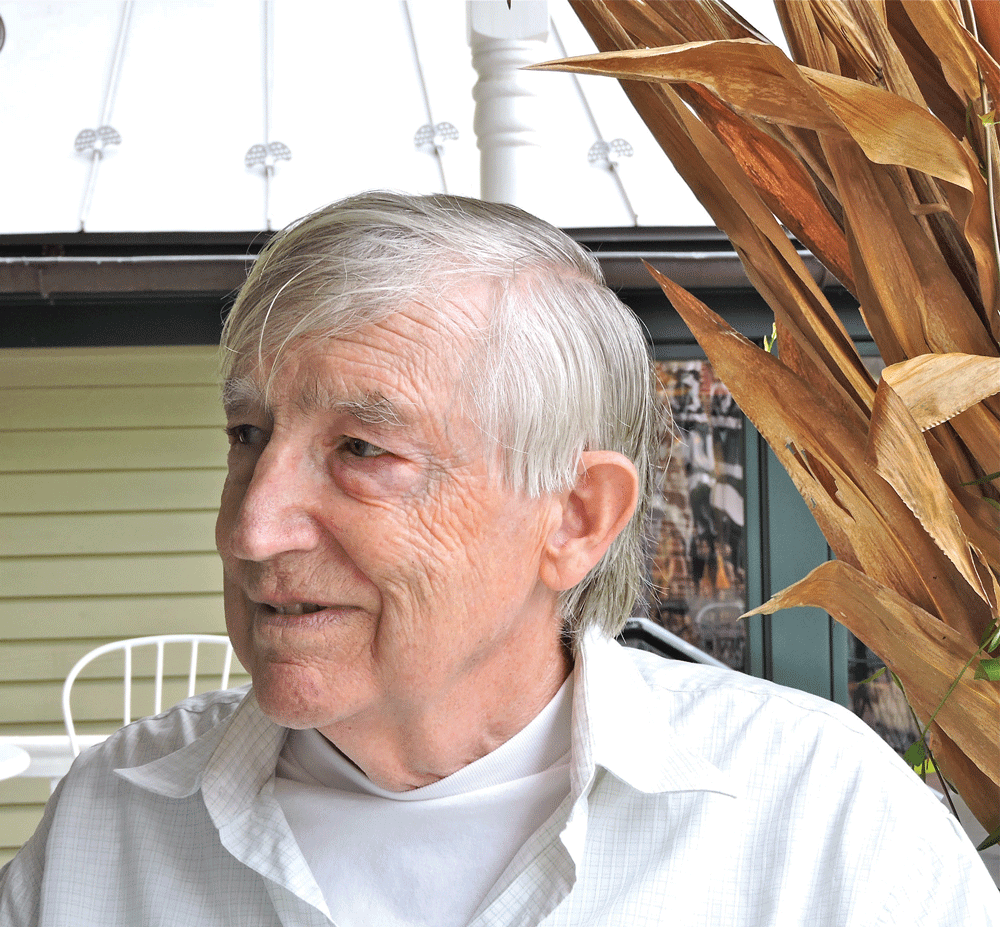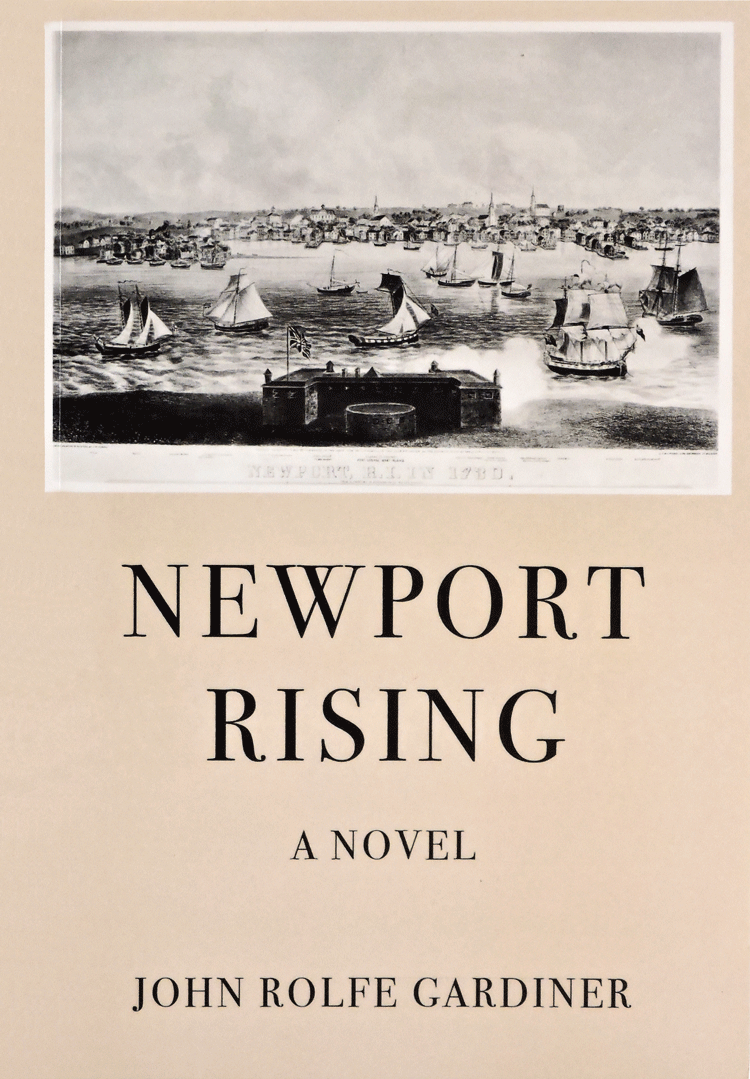“Newport rising” A New Novel by John Rolphe Gardiner

By Richard Hooper
The writer John Rolphe Gardiner, resident of Unison, has set his latest novel, “Newport Rising,” in the thriving port of Newport, Rhode Island, just before and during the American Revolution. Gardiner’s knowledge of the time and place sets the stage, and the cadence of his prose and styling of dialogue transport the reader there.
The protagonist, Cotton Palmer, arrives in Newport in 1762 aboard the ship Piety, which is carrying Spanish lace, gunpowder and molasses that the captain of the ship intends to smuggle past British customs. It also carries two slaves who did not sell in the markets of the Caribbean
or Charleston.
On Narragansett Bay, Newport was the largest home port to colonial slavers and the center of an enterprise know as the Triangle Trade. Rhode Islanders produced rum in copious quantities, then shipped it to West Africa where it was exchanged for slaves. The slaves were transported to the West Indies and the Southern Colonies to be sold. There, the ships would load on molasses for the return to Newport, where it was used to produce more rum, then off again to West Africa in a cycle that repeated itself for some 80 years until 1807, when the last Newport
slaver docked.

Palmer was a free thinker and printer. It was a time when gossip and innuendo could quickly attain the status of fact, and Palmer would use his trade to inject his own observations (under assumed names) in letters to the editors of the numerous gazettes for which he had worked and been dismissed over the years. Using this method as his own social media outlet, he managed to poke his thumb into nearly everyone’s eye. His ruse usually did not last long, and he was distrusted by both the British Crown and its supporters as well as those who favored independence.
Also onboard the Piety was the young, pregnant woman, Sally Warren, who was without husband but with a letter of introduction attesting to her virtue. She was staunchly against slavery and worked to smuggle escaped slaves to freedom. She caught the attention of Cotton Palmer and was the object of his desire and, occasionally, he of hers. Gardiner creates a fascinating pas de deux between them. Their relationship is a mix of curiosity and suspicion, at times restrained, but levered forward by the forces of carnal attraction and other needs. Throughout, it is guided by mutual respect for each other and is a very moving aspect of the book.
Newport was a religiously open community: Baptists, Quakers, Jews and others flourished. Although Palmer was not convinced that any of them held the answer, he was concerned enough for the destiny of his own soul to take an interest in all of them. He did not succumb to any of the various efforts to convert him, which became a further reason for people to dislike Palmer.

The conflicting viewpoints of the various faiths and Palmer’s observations about them, the descriptions of traveling ministers and ministers with churches are all wonderfully depicted by Gardiner. This variation of
religions at the time of our country’s founding forms one of the strands of the Newport social structure. It weaves together with other strands such as the various trades of furniture making (some of the finest craftsmen, including the Goddard and Townsend families, were working in Newport), shipbuilding and makeshift employment to simply stay alive. Newport, like all other places, was not utopia, and the warp of vulgarity is very well described as it crosses over (or would it be under?) the weft of civility.
Eating away at the entire fabric is the hypocritical worm of slavery. Newport and Rhode Island not only traded in slaves but also had a proportionately large slave population. Newport had a market for auctioning slaves, and at one point, there was a law denoting that if a slave was found in the home of a freed slave, both would be whipped.
Enveloping this was the growing hostility between colonials and the British. In the early 1770s, the British Navy positioned itself in the bay to intercept smugglers and collect tariffs. When one of their ships ran aground, colonists torched it. In a show of power—like tweets emitted in the middle of the night—the British would lob cannonballs into the town, chipping away at wharves and other structures. Cold, bored and convinced of their superiority, they dismantled buildings for firewood. When the navy departed in the autumn of 1779, some 30 percent of Newport had been destroyed.
It is within this environment that Palmer, Warren and their friends navigated. To achieve their goals was a delicate balance between taking action and not being caught. At times, their activities could raise suspicions with the British and colonials alike.
I am reminded of a trip to Colonial Williamsburg one winter. There was no electric lighting, and at night, a wood fire blazed in the middle of the street every couple of hundred feet. Only candles glowed on the tables at the eateries. Outside any perimeter lit by fire there was darkness, and you could only imagine what it might contain.
In “Newport Rising” Gardiner gives a wonderful description of navigating with integrity through the darkness of Revolutionary America, illuminating some of our own time as well. ML
Copies of “Newport Rising” are available from Amazon Books. It can also be read as an e-book on Kindle.


